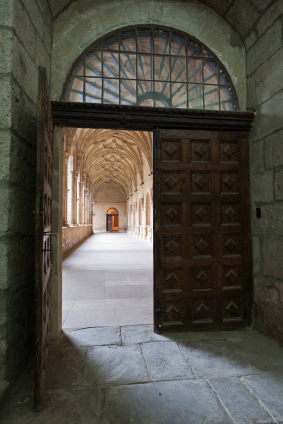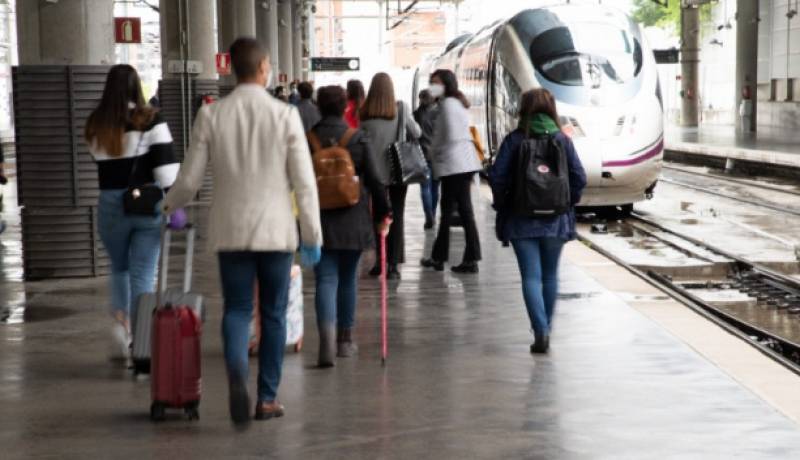- Region
- Vega baja
- Marina Alta
- Marina Baixa
- Alicante
- Baix Vinalopo
- Alto & Mitja Vinalopo
-
ALL TOWNS
- ALICANTE TOWNS
- Albatera
- Alfaz Del Pi
- Alicante City
- Alcoy
- Almoradi
- Benitatxell
- Bigastro
- Benferri
- Benidorm
- Calosa de Segura
- Calpe
- Catral
- Costa Blanca
- Cox
- Daya Vieja
- Denia
- Elche
- Elda
- Granja de Rocamora
- Guardamar del Segura
- Jacarilla
- Los Montesinos
- Orihuela
- Pedreguer
- Pilar de Horadada
- Playa Flamenca
- Quesada
- Rafal
- Redovan
- Rojales
- San Isidro
- Torrevieja
- Comunidad Valenciana
Introduction to La Rioja
La Rioja is synonymous with wine, but also offers other gastronomical treats, with many natural parks and rivers
 Sometimes the name of a place is inevitably associated with one of the products made there: think of Cheddar, Axminster or Tequila, and the first things that spring to mind are almost certainly cheese, carpets and alcohol. In the case of La Rioja, the mind immediately disregards all other aspects and focuses on just one thing: red wine.
Sometimes the name of a place is inevitably associated with one of the products made there: think of Cheddar, Axminster or Tequila, and the first things that spring to mind are almost certainly cheese, carpets and alcohol. In the case of La Rioja, the mind immediately disregards all other aspects and focuses on just one thing: red wine.
There are over 500 wine Bodegas in La Rioja, and visiting them is one of the most popular tourist activities in the region, some of the best known names being , Marqués de Griñón, Marqués de Murrieta, Marqués de Riscal, Palacios Remondo and Viña Salceda, although there are plenty more to choose from.
 Despite being one of Spain’s smallest autonomous communities (only the Balearics and the cities of Ceuta and Melilla are smaller) La Rioja is also renowned within Spain for its wildlife, landscape, gastronomy, tapas culture, historical importance and fiestas, and although it is home to only a third of a million people – fewer than in any other autonomous community – the Spanish hold the region in high regard for many reasons other than the wine.
Despite being one of Spain’s smallest autonomous communities (only the Balearics and the cities of Ceuta and Melilla are smaller) La Rioja is also renowned within Spain for its wildlife, landscape, gastronomy, tapas culture, historical importance and fiestas, and although it is home to only a third of a million people – fewer than in any other autonomous community – the Spanish hold the region in high regard for many reasons other than the wine.
The geography of the region is dominated by the River Ebro, which runs for 120km along the northern edge of the territory, and by the seven tributaries which flow into it from the Iberian mountain range to the south: : the Oja, the Najerilla, the Iregua, the Leza, the Jubera, the Cidacos and the Alhama.

The irrigation provided by these rivers has defined the landscape and agriculture over the ages. Apart from vineyards, La Rioja is also famed for its cereal crops, asparagus, mushrooms, artichokes and the sheep and pigs which feed in the meadows and woods. Typical dishes include potato and chorizo stew, “chuletillas al sarmiento” (lamb chops cooked over a fire made from vine branches) and pears in red wine sauce, all of them excellent remedies against the cold winter weather.
Visitors of a gastronomic bent will also be drawn to Calle Laurel and Calle San Juan in the old centre of Logroño, which are renowned as one of the most satisfying areas in Spain to enjoy tapas and a convivial evening out.


Throughout the Middle Ages and most of the Modern period the area was known as Logroño (which is now the capital city), and was either a part of other kingdoms or an independent province. It was not until 1980 that the name of La Rioja was adopted, and even now almost half of the inhabitants live in the capital. 
Apart from wine tours, many visitors both from the rest of Spain and from abroad are attracted by some of the country’s most peculiar fiestas, which include the Fiesta de la Vendimia in Logroño and San Mateo (a twelfth-century festival coinciding with the grape harvest at the end of September, normally celebrated the 20th to 26th September), the Batalla del Vino (wine battle) in Haro on 29th June and the stilt-dancing fiesta in Anguiano which takes place every July.
Other popular fiestas include San Bernabé on 11th June during which fish and wine are distributed to revelers, Semana Santa and Christmas.
La Rioja also offers many opportunities for sports enthusiasts: The natural parks and rivers offer a playground 
For those accustomed to flamenco, paella and beach culture, La Rioja is a different world. Most of the tourist attractions are listed under wine tours, wineries, wine culture, wine accommodation, wine festivals, wine museums and even “wine architecture”. This brief overview has not focused on the region’s main export, but don’t forget to load up the boot of the car and bring back a liquid reminder of your visit!
Where is la Rioja?
La Rioja is located in the North of Spain and is surrounded by Navarra and Pais Vasco to the north, Aragón to the east, Castilla La Mancha to the south and Castilla y León to the west. It’s 388km from Madrid, 137km from Bilbao,478 km from Barcelona and has its own airport La Rioja –Agoncillo).
Click for map, La Rioja


























